To Seep and Bleed into the Word, Daniel Domig, Diana Lowenstein Gallery, Miami, June 4- July 28, 2016

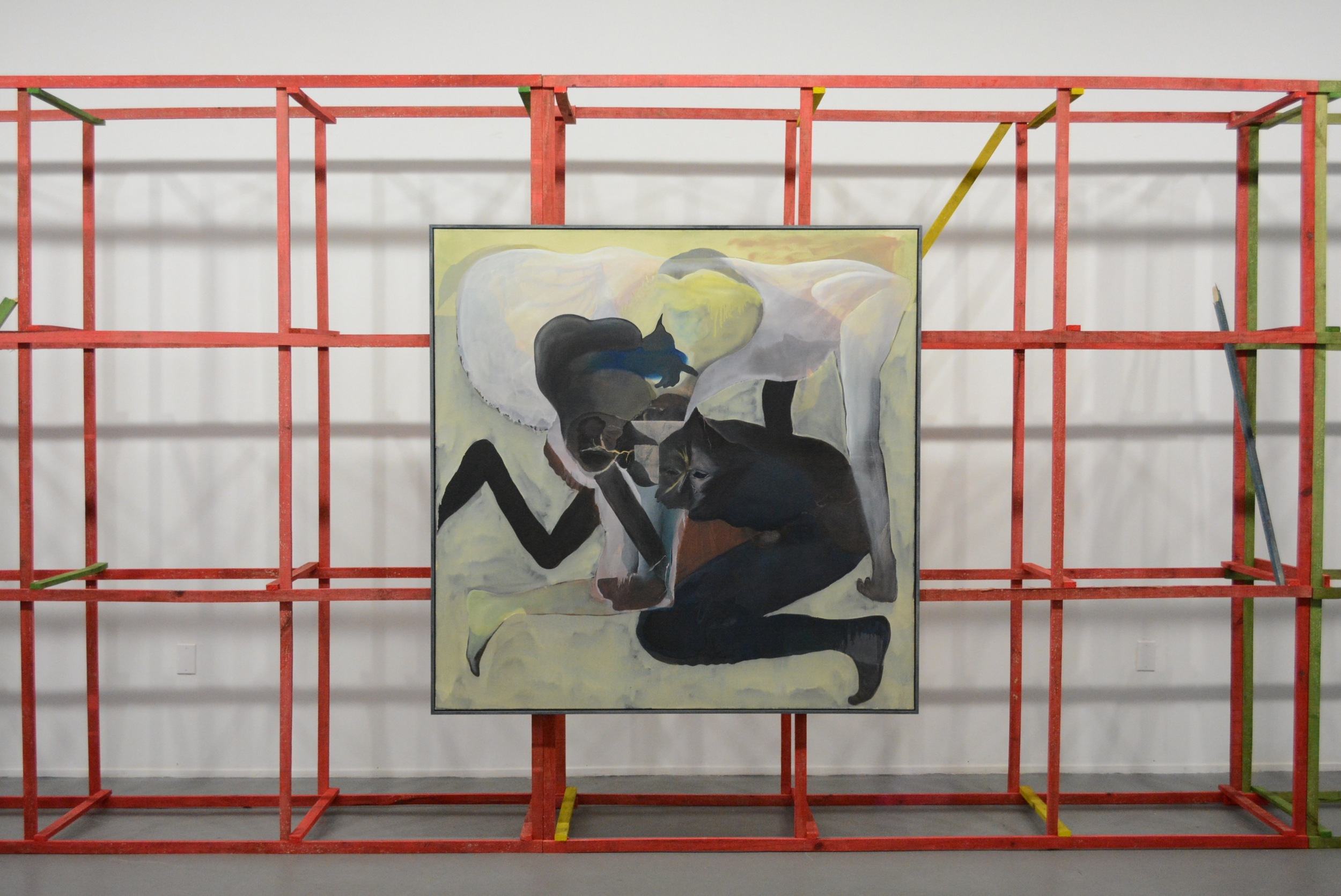
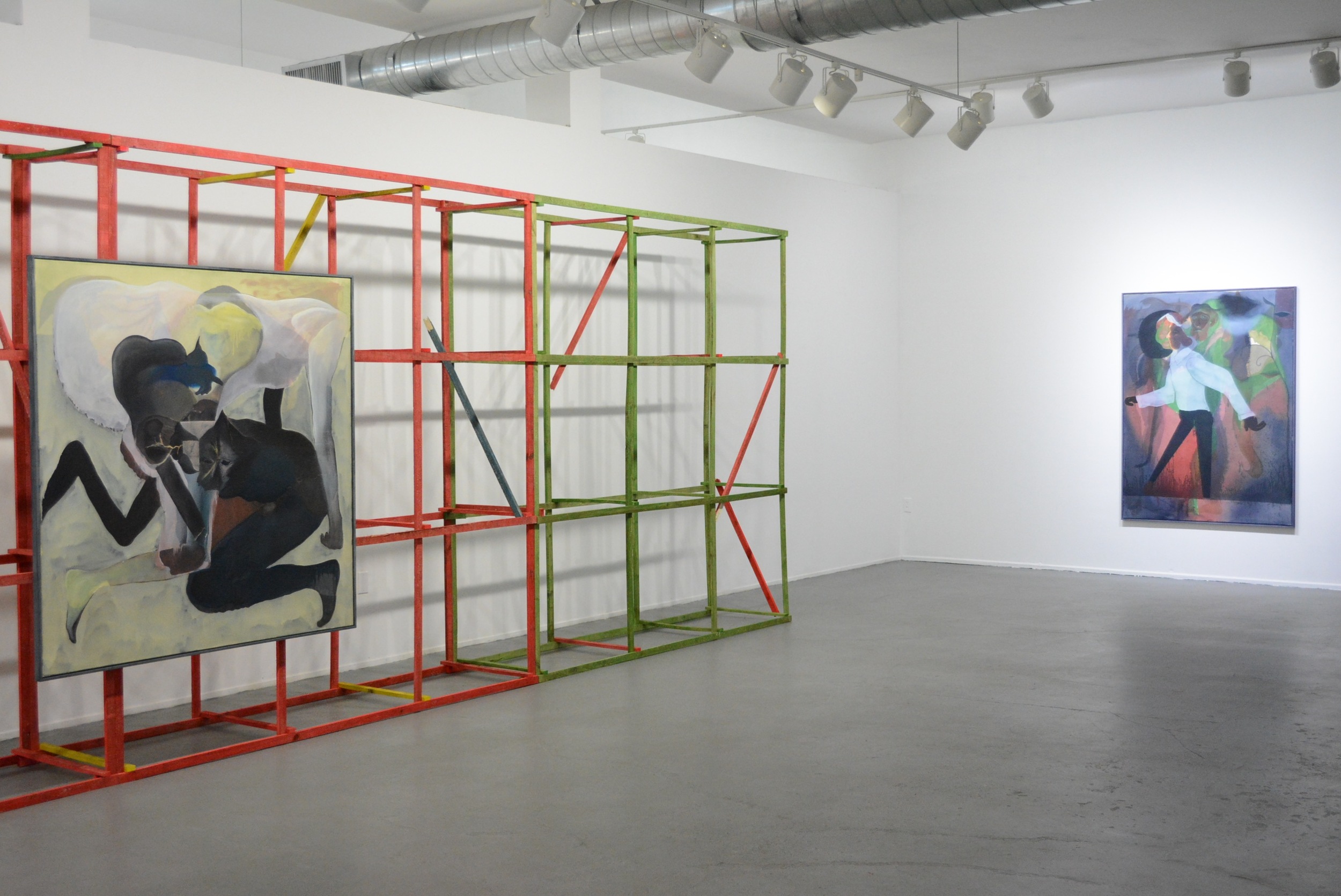
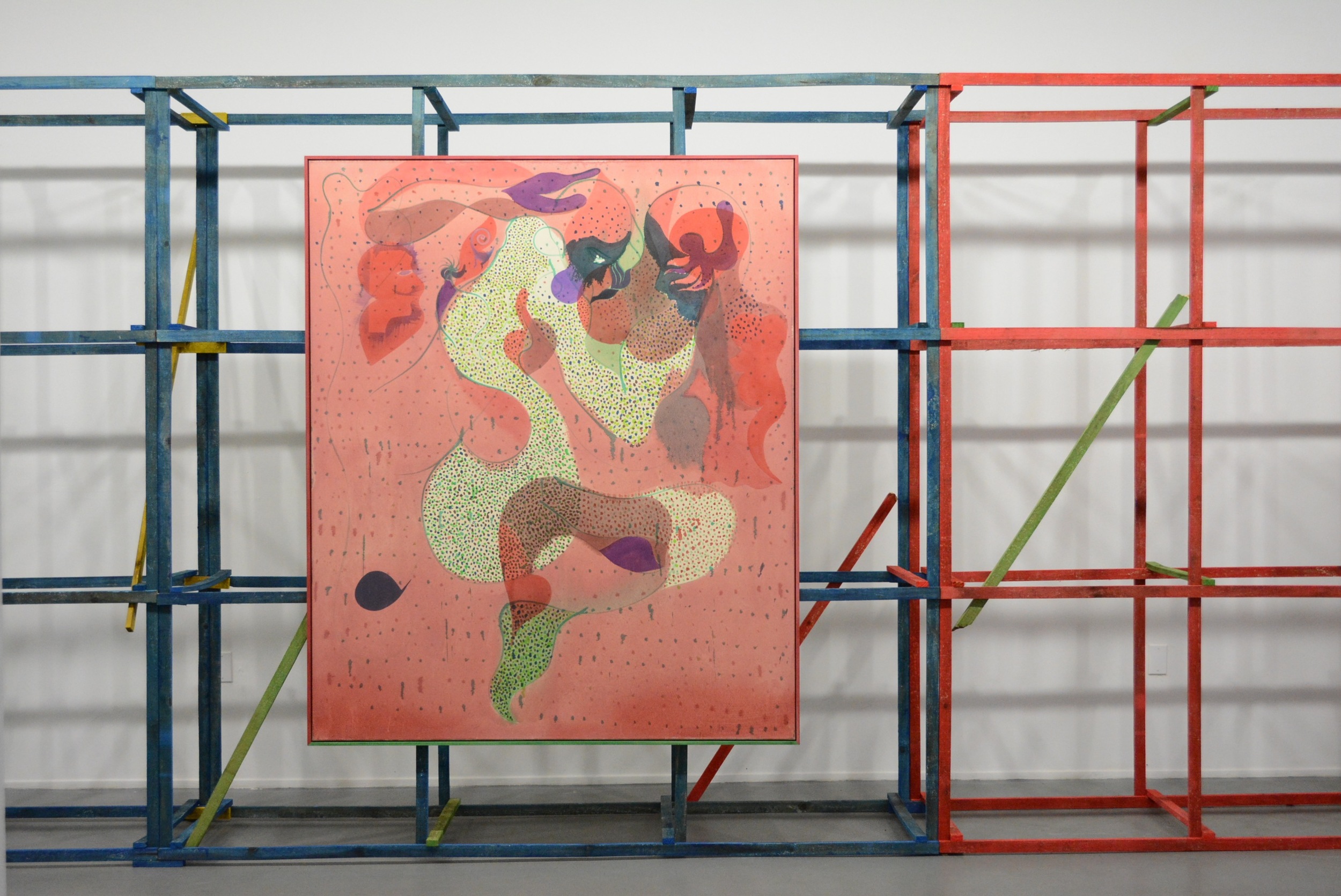

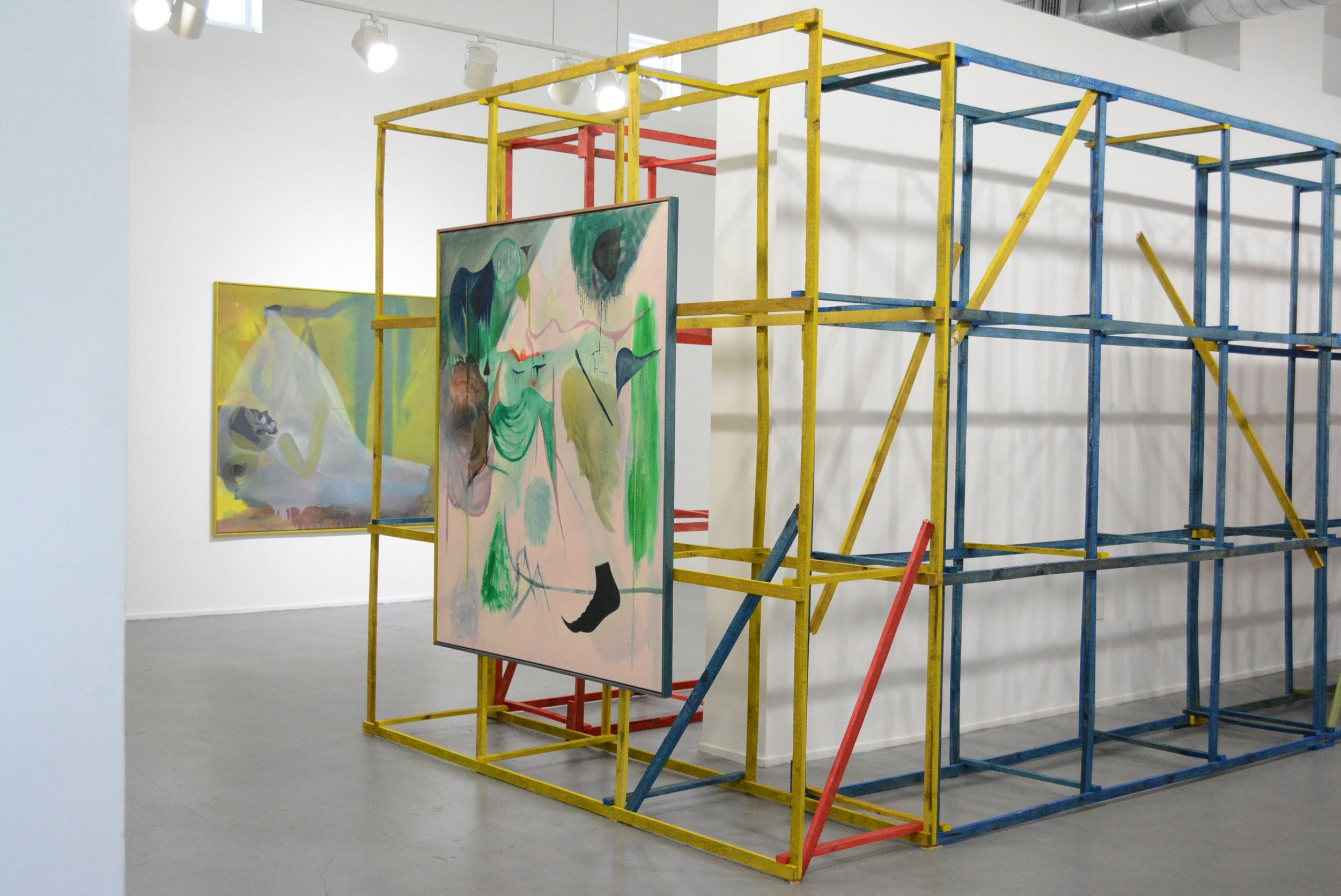

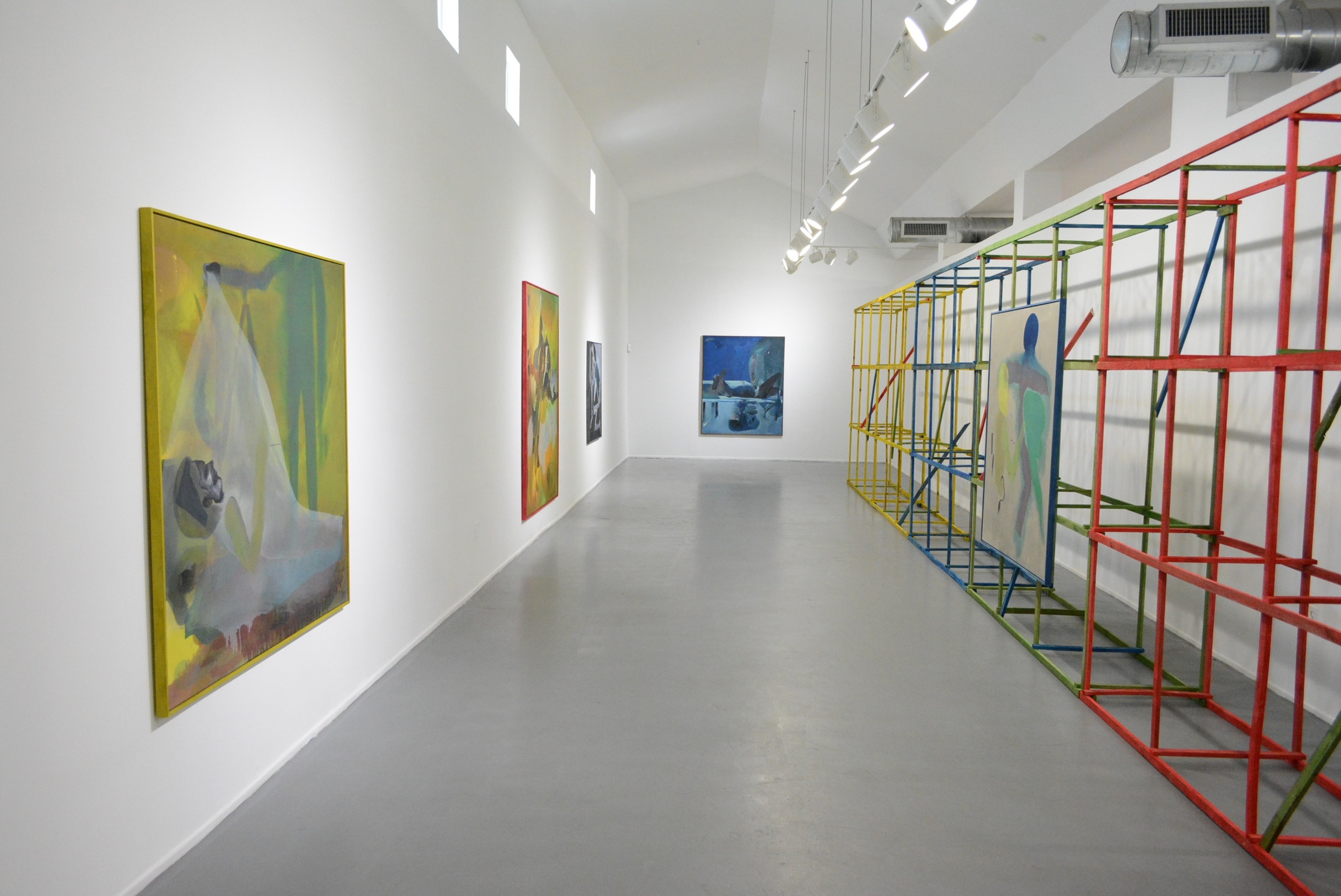
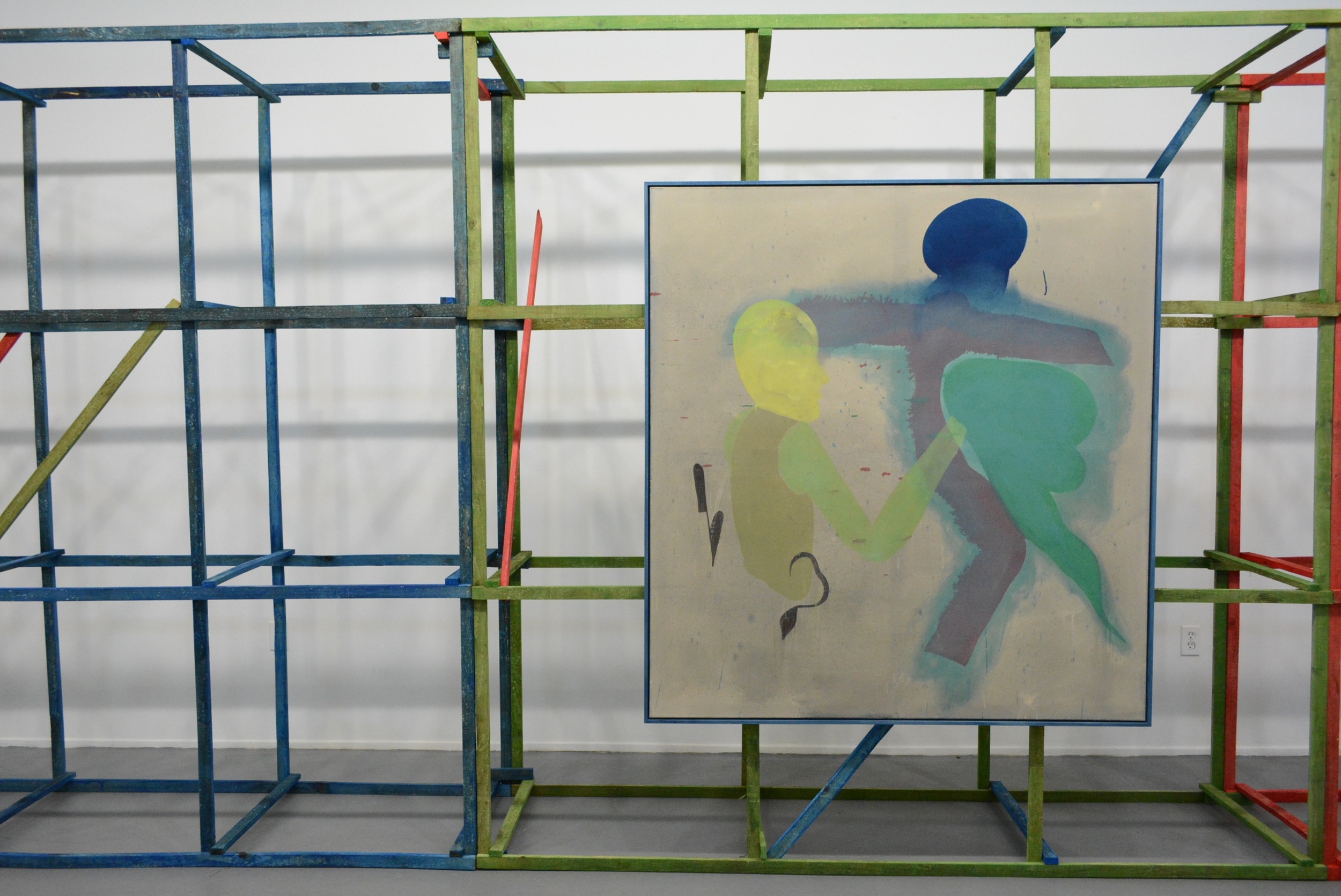

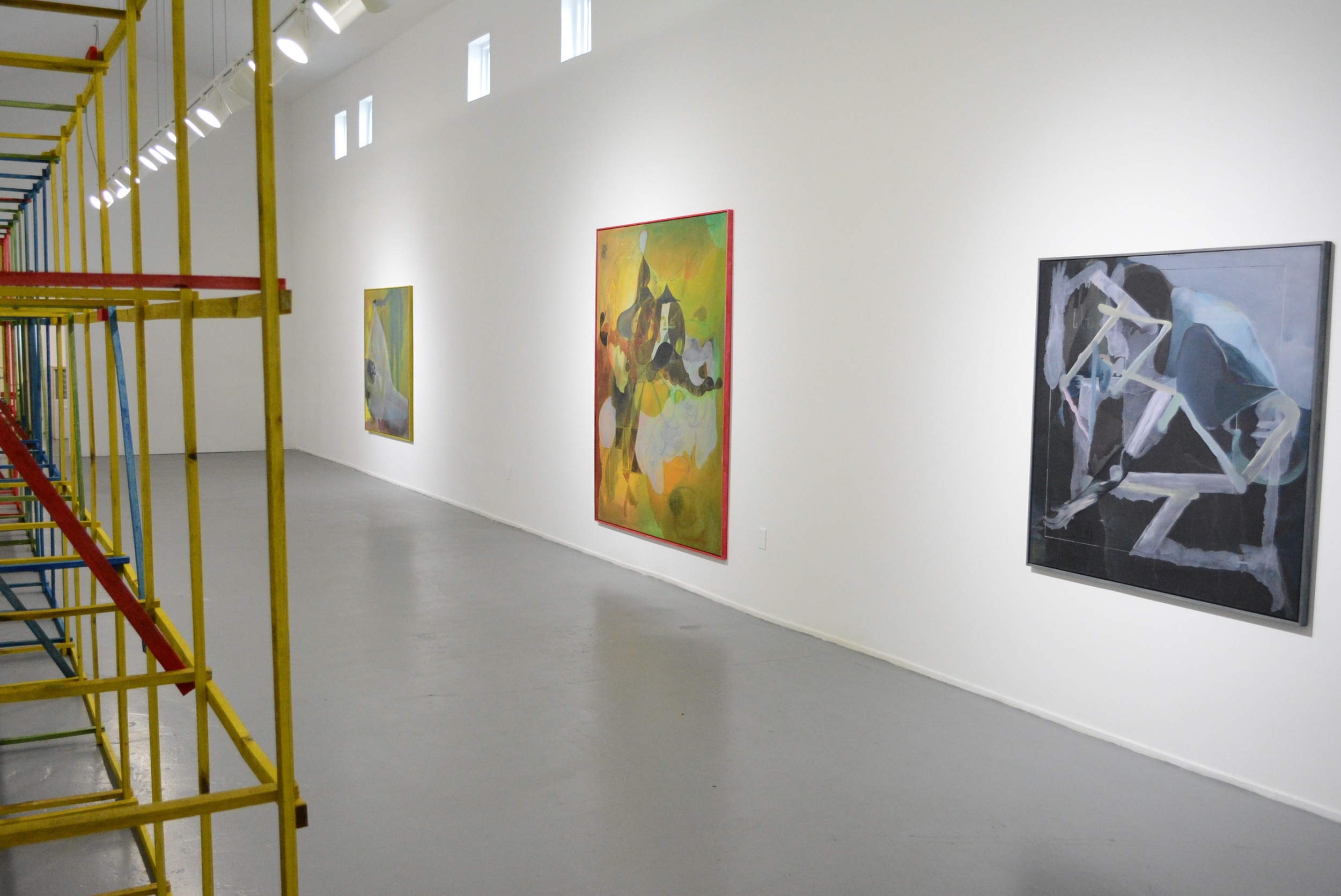
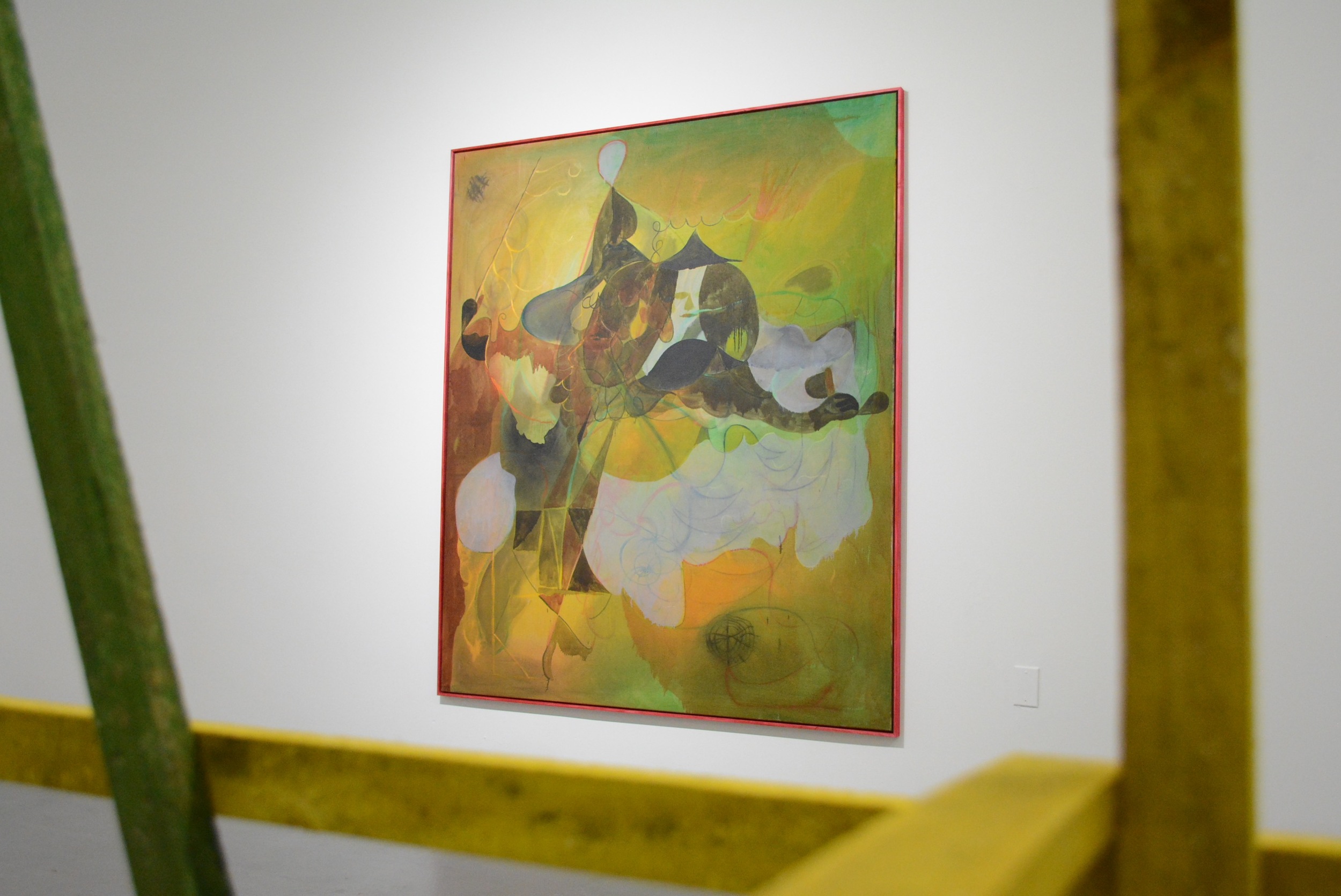
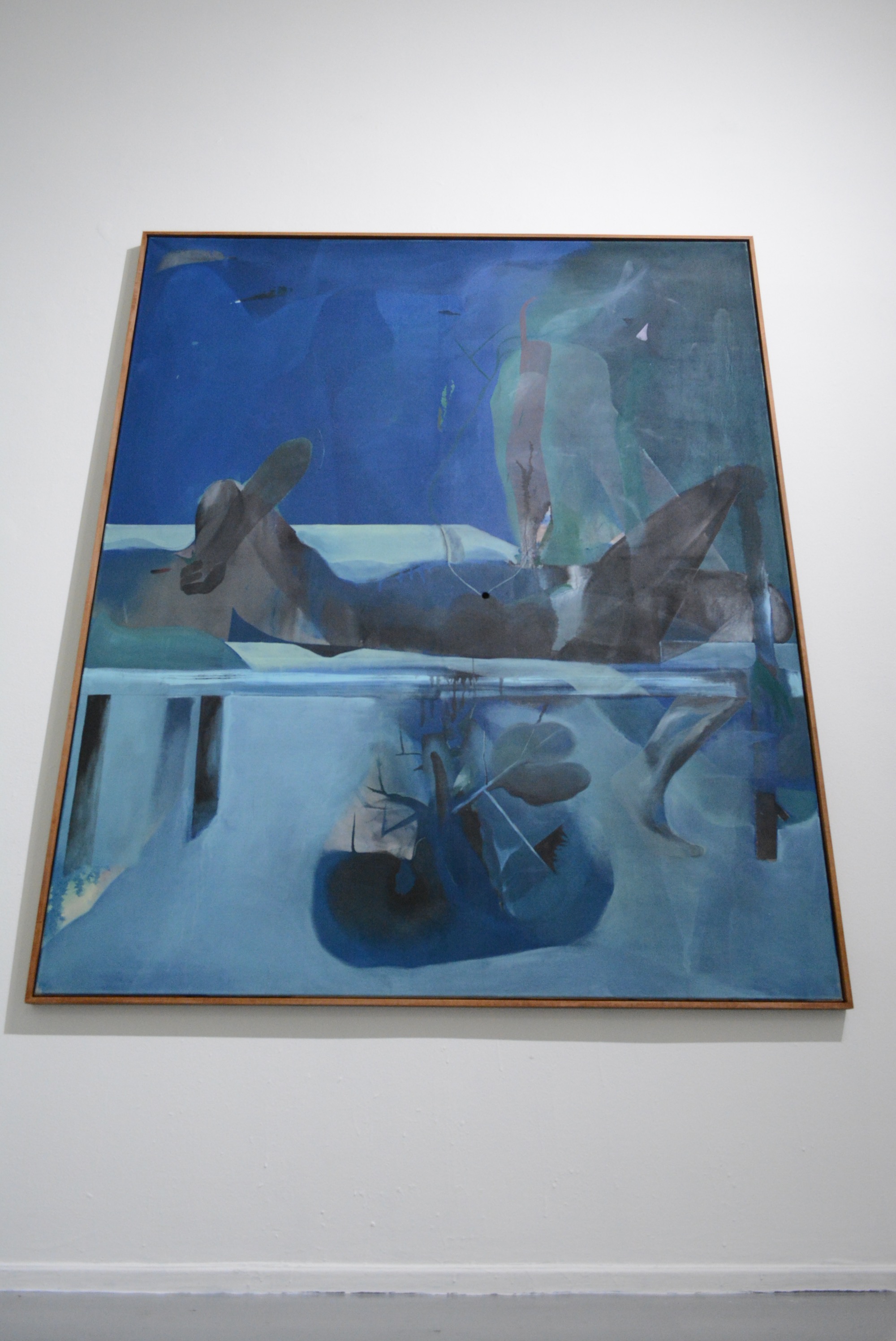
"There is no invention in painting, no true creation. There is an unfolding and unveiling of color and form. There is a reshaping of the raw and inanimate material of paint".
Daniel Domig, 2014
The title of the show is shared with a new installation that runs along and around the center wall of the gallery. The structure is made of individually colored wooden bars which are constructed into a hollow wall on which several paintings are hanging. The installation plays off the architecture of the space as well as reminding us of the stretchers behind the paintings themselves. As Domig's beautifully obscure paintings have a tendency to escape into the blurriness of their own shapes and colors, the wooden construction becomes the anchor by stabilizing these hovering canvases.
All of the artist's installations have always attempted to lay bare the experience of looking at art as well as the conditions needed for immersing oneself in it. They also serve to bridge the gap that is left when the paintings leave the uncertainties of the studio, and are placed within the sterile, white-box environment of the gallery.
A handmade installation must literally turn the gallery space into a temporary workshop. There is a certain oddness to seeing paintings on a makeshift scaffolding which surprisingly often provokes a new encounter with them.
In the artist's own words: "Painting is a process. A thickening of the visible that is agitated by an appearance of forms, lines and shapes. Every mark not so much in addition to, but in fundamental transformation of all preceding ones. As this process continues, there is an increasing tension between painter and painting. Material has its stubborn qualities, the composition its own logic. Like a parent bringing up a child, the painter must avoid imposing his own vision onto the empty canvas, and come to terms with guiding a living organism that has a mind of its own".
